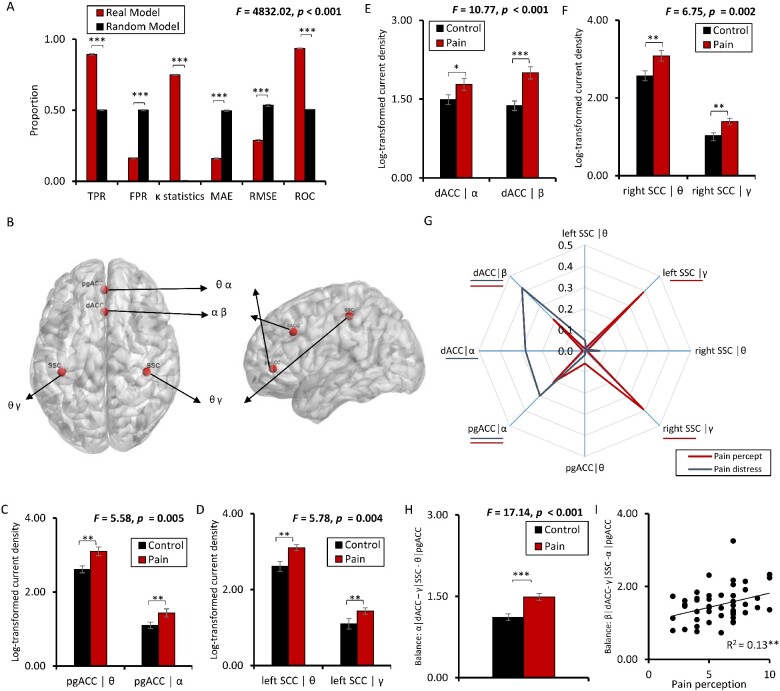Figure 1.
Activity changes. (A) Support vector machine (SVM) learning differentiating between chronic pain and healthy controls with an accuracy 89.3% in comparison to a random model. The true positive rate (TPR) and the area under the curve (ROC) were significantly higher for the obtained model in comparison to the random model, while the false positive rate (FPR) was significantly lower. A significant difference was also identified by comparing the κ-statistic, MAE and RMSE, confirming the strength of the tested model in comparison to the random model. (B) SVM differentiates between respectively chronic pain versus controls for the pregenual anterior cingulate cortex (pgACC), for the θ and α frequency band, dorsal anterior cingulate cortex (dACC) for the α and β frequency band and for the left and right somatosensory cortex (SSC) for the θ and γ frequency band. (C–F) Activity changes in the areas obtained with SVM show significant increase in chronic pain patients in comparison to control subjects for the specific frequency band obtained with SVM. (G) Correlations between the pain intensity percept (red) and the activity for the pgACC, dACC, left and right SSC and correlations between the pain distress (black) and the activity for the pgACC, dACC, left and right SSC reveals. (H) The difference in balance between the pgACC at α, and the dACC at β plus the left and right SCC at γ frequency band is significantly increased in patients with chronic pain in comparison to control subjects suggesting that the key areas (dACC and SCC) involved in the ascending pathways are more active in comparison to the key area involved in the descending pathway. (I)This imbalance correlates with the perceived pain intensity. (†P < 0.10, *P < 0.05, **P < 0.01, ***P < 0.001). For the radar plots, effective connectivity areas underlined indicate a significant effect (blue for pain distress, red for pain intensity).

